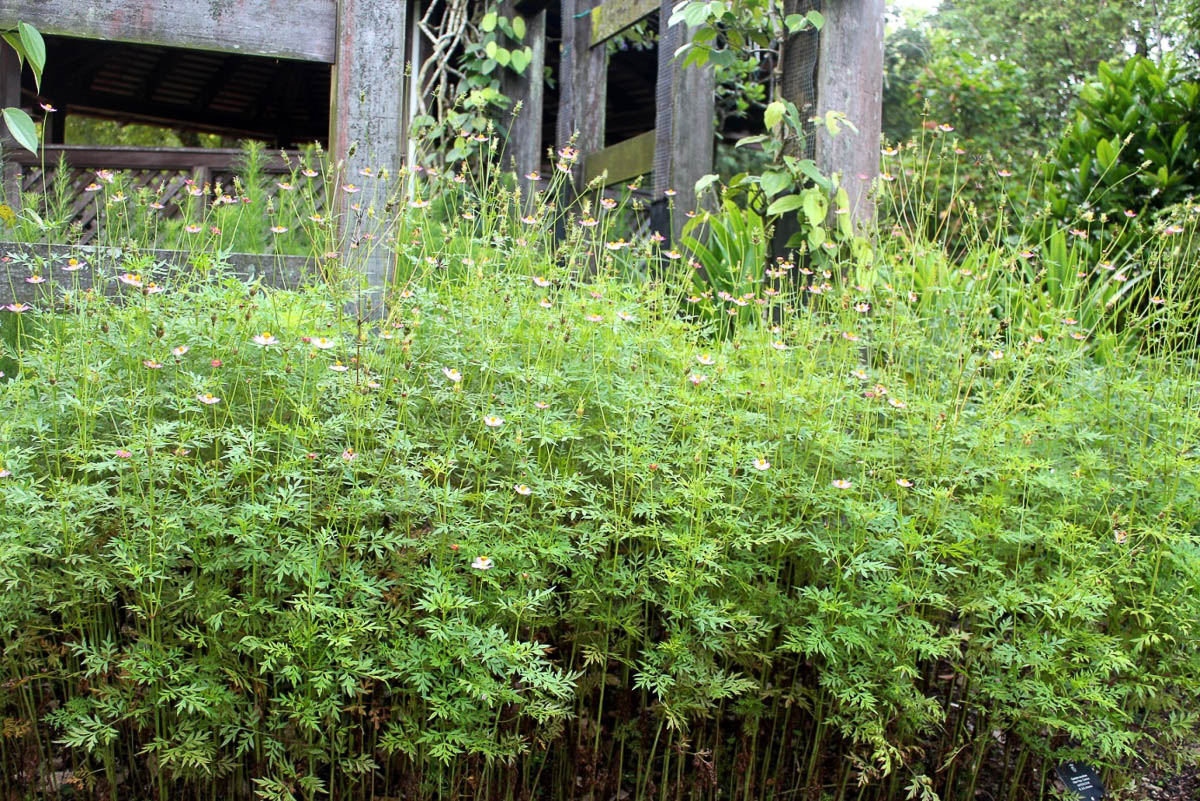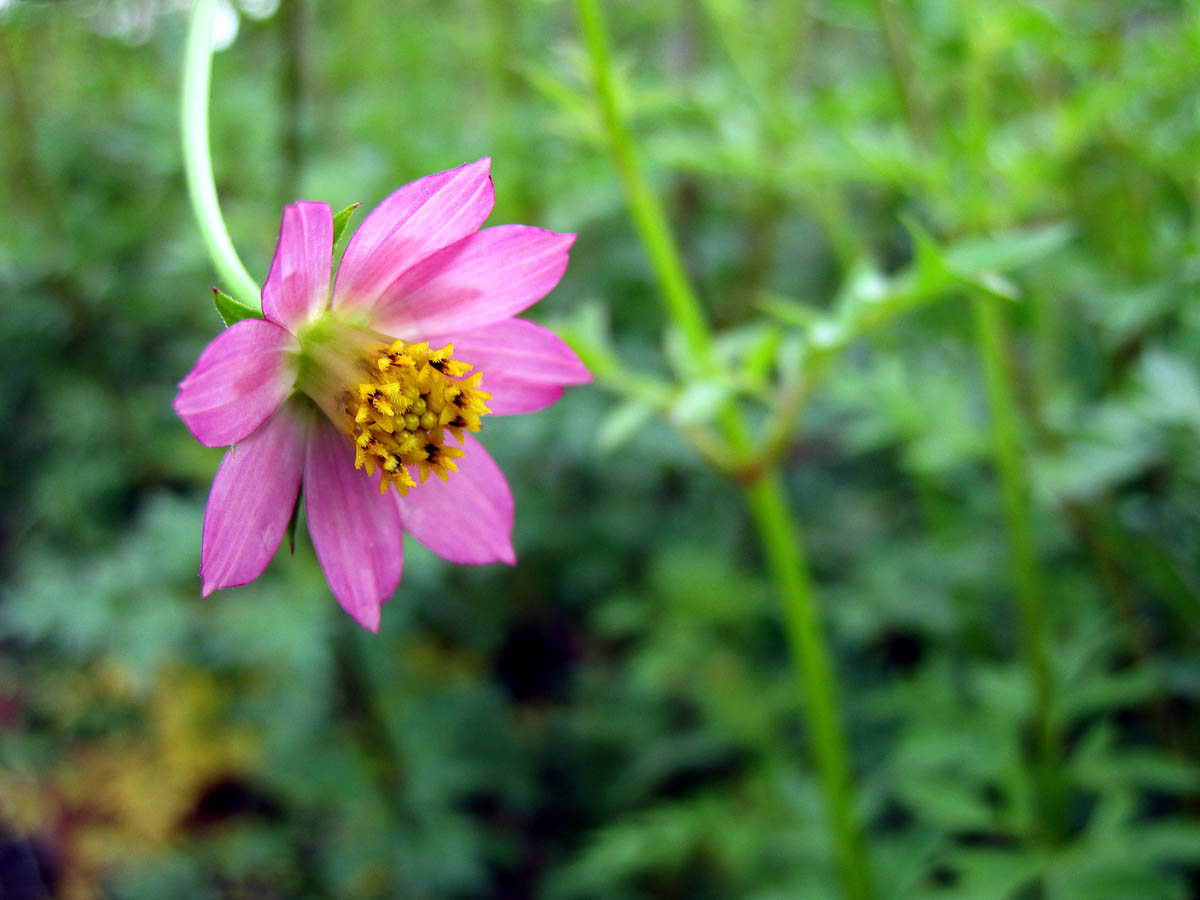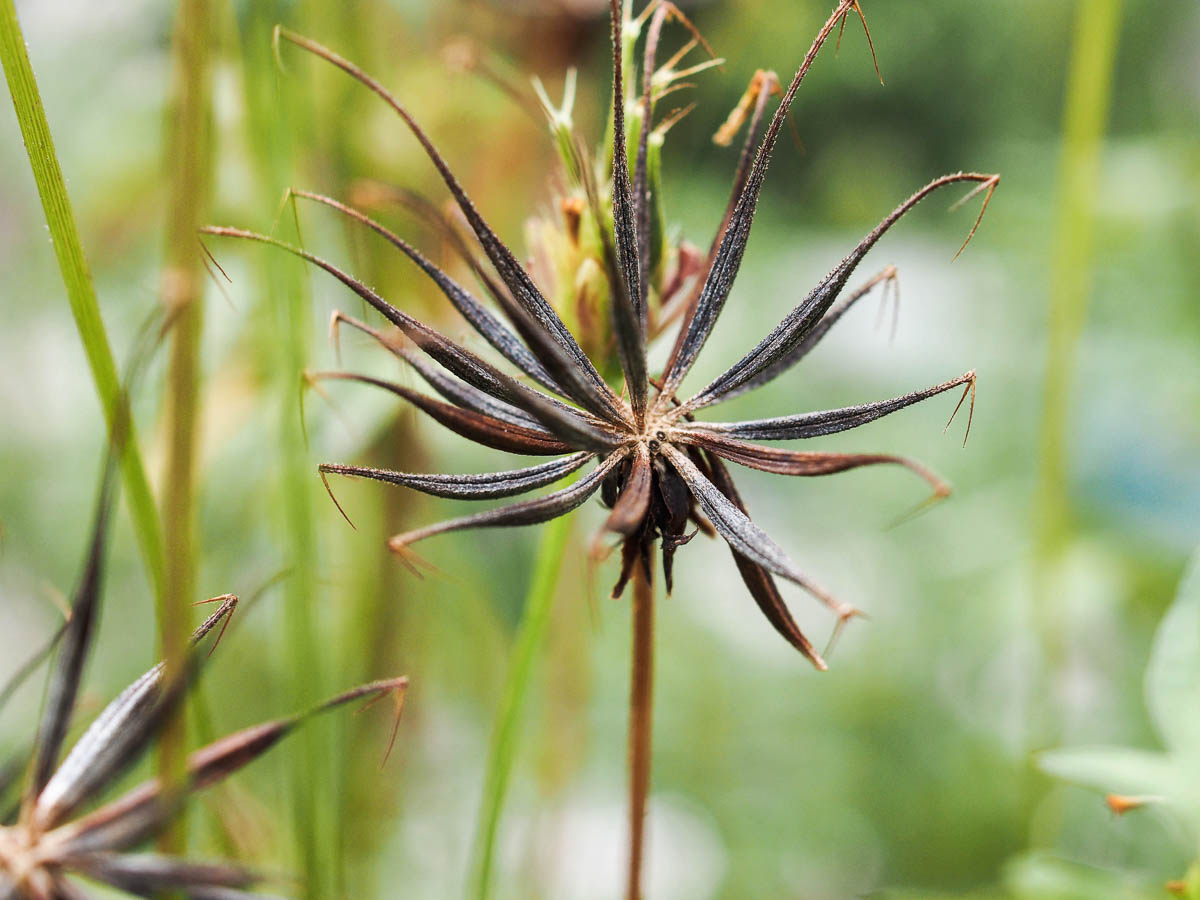Ulam Raja
Ulam Raja (Cosmos caudatus)
Other common names: Wild Cosmos, Cosmos, Ulam Raja, Pelampong, 帝皇乌蓝

Ulam Raja are large bushy plants with edible leaves that are eaten raw and are a key ingredient in Nasi Ulam, a rice salad eaten in Southeast Asia. The plant also produces small pink flowers that attract a variety of butterflies and bees.
This large annual shrub produces many small wind-dispersed seeds that sprout quickly, which usually results in seedlings spontaneously growing around the garden. This makes it a popular choice for edible gardens, that practice crop rotation.
Sun and soil needs:

Ulam Raja grows well in 6-8 hours of direct sunlight. They can also be grown in more than 4 hours of direct sunlight or more than 6 hours of indirect sunlight, but will produce less leaves and flowers.
Plants do best in pots with loamy soil at least 20cm deep, or in true ground. These plants are vulnerable to root rot, so ensure that your pots drain well, and that your soil has plenty of organic matter to let the roots breathe.
Sowing seeds:
Sow seeds individually in a seedling tray filled with potting mix or seedling mix. Lightly mist the soil until damp, once a day. Seeds should sprout within 10 days.
The seedlings will be vulnerable to high heat and heavy rain and are best kept in a sheltered propagation area or a shaded space with around 4 hours of partial or direct sunlight.
Seeds can be sown directly into pots or the ground around 15cm apart. Lightly water the soil until damp, once a day. Seeds should sprout within 10 days.
Transplanting:
Seedlings will be ready for transplanting into pots or true ground when they have developed 4 or more leaves, or roughly a week or two after germination. Leave 15cm between each plant to encourage more growth and better ventilation.
Growing:
Ulam Raja plants grow rapidly, especially with regular harvesting, and generally does not need fertilising.
Ulam Raja plants will die after producing seeds. Prolong your harvest by pinching off flowers when they appear.
Harvesting:
_jacquelinechua.jpg)
Plants can be harvested for young or old leaves at any time.

Fruits can be harvested for seeds when they are brown and dry.
Propagation:
Ulam Raja can be grown from seed.
Common problems & solutions:
This plant is relatively resistant to pests and disease if kept healthy.
Aphids, Mealy Bugs, Whiteflies, and Spider Mites often infest the plant if it has underlying problems like repeated wilting from heat stress. Mechanical pest control methods like pruning the infested parts are the best methods for managing these pests in the short term, but resolving the underlying problem will prevent them in the long term.
Wilting may occur during periods of hot weather or from the lack of watering. Regular wilting will stunt plant growth. Increase the number of times a plant is watered, or use mulch to retain moisture in the soil.

